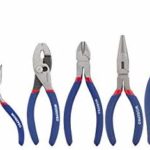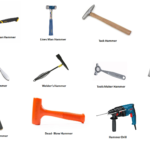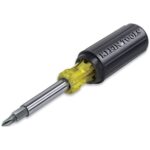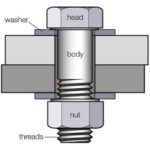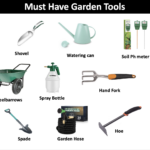You may be using pliers for different applications. But, do you know different types of pliers and the way to identify them? Pliers are the most important tool that is used in every possible industry for repairing purposes. If you want to repair anything whether it is mechanical or electrical, you will definitely require pliers. The selection of the pliers is done on the basis of the area in which we are working.
Now, let us take a deep view of all the types of pliers and their uses.
Types of Pliers
- Slip Joint Pliers
- Lineman’s Pliers
- Tongue and Groove Pliers
- Diagonal Pliers
- Needle-nose Pliers
- Bent Nose Pliers
- Round Nose Pliers
- Locking Pliers
- Sheet Metal Pliers
- Canvas Pliers
- Crimping Pliers
- Snap Ring Pliers
- Bail Making Pliers
- Battery Pliers
- Brake Spring Pliers
- Combination Pliers
- Eyelet Pliers
- Grommet Pliers
- Hose Grip Pliers
- Oil Filter Pliers
- Nail Puller Pliers
- Push Pin Pliers
- Wire Twisting Pliers
- Piston Ring Pliers
1. Slip Joint Pliers
Slip joint pliers are the types of pliers whose fulcrum can be easily moved. This fulcrum is also termed as the pivot point. Here, the size range of the jaws is easily increased due to the movable fulcrum.
Most of the slip joint pliers use the type of mechanism where the sliding movement of the pivot point takes place in one of its positions. This sliding takes place when the pliers are fully opened.
There are many sub-types of slip joint pliers like a straight slip joint pliers, tongue-and-groove pliers and lineman’s pliers.
2. Lineman’s Pliers:
Lineman’s pliers are mostly used by the linemen and that is why they have given such a name. The main application of the lineman’s pliers is in the twisting, bending, cutting wire, etc.
Do you know the way to identify the lineman’s pliers?
Lineman’s pliers are identified by the flat gripping surface which is present at their snub nose. So, if you find any plier with the gripping surface at the snub nose then, it is nothing but the lineman’s pliers.
Another essential feature of the Lineman’s pliers is that it consists of the beveled cutting edge.
Lineman’s pliers are used in the heavy-duty applications and their machining is done from the forged steel. The accuracy of this plier type is controlled with the help of the rivet. The rivet saves the pliers from breaking or damaging even they are used in the applications where larger force is present.
Lineman’s pliers come with two grips. These two grips give you the ability to handle them easily. These grips have a layer of insulation on them. While dealing with electric wires this insulation helps the users from protecting against the electric shocks.
Some models of this pliers are made in such a way that they can withstand a higher voltage of around 1000V
Now let us talk about the durability of the lineman’s pliers:
The durability or the working life of the pliers depends on the design, frequency of heavy applications and other several factors.
For the basic model of the lineman’s pliers, steel containing low carbon content is used.
High-quality lineman’s pliers are made from the steels containing higher carbon. The basic steel is alloyed with chrome, vanadium, and molybdenum.
Uses of lineman’s pliers:
- Lineman’s pliers are mostly used in electrical applications. They are used for bending, cutting and straightening the wire.
- They are also sometimes used to strip the wire. But they are less efficient than the wire stripper for the same applications.
- Often a few times, they are used to pull the fish tape.
- Few of the lineman’s pliers come with the crimping tool which is further used for compressing the crimped connections.
- Perfect right-angle bends are created by the square nose of the lineman’s pliers.
- They are also used for cutting the drywall and steel screws.
- The tapered nose of the lineman’s pliers can be used for reaming the rough edge.
3. Tongue and Groove Pliers:
Tongue and groove pliers are one of the types of slip-joint pliers. They are also termed as the water pump pliers, adjustable pliers, arc-joint pliers.
Design
The design of the Tongue and groove pliers is quite simple. The jaws of the Tongue and groove pliers are set 45 to 60 degrees of the handles.
The lower jaws of the Tongue and groove pliers can be moved to several positions as per the requirement of the application. These pliers are designed in such a way that they can be adjusted to several sizes without enhancing the distance between the two handles.
The design of the Tongue and groove pliers allows us to use them for the applications where space is compact or a very small area is present.
For more leverage, their handles are very long. The size of the handles of the Tongue and groove pliers is around 9.5 to 12 inches.
These pliers can be easily identified upon seeing their larger handles.
Uses of Tongue and Groove Pliers:
- Tongue and groove pliers are used for turning and holding of the nuts as well as bolts.
- They are widely used for gripping irregular shaped objects and also sometimes for crimping of the material.
4. Diagonal Pliers:

Diagonal pliers have many names like diagonal cutters, diagonal cutting pliers, side-cutting pliers, etc. Their main application is to cut any type of wire. Here the plane created by the two jaws joins the rivet at an angle, hence these pliers are termed as the diagonal pliers.
In Ireland and the United Kingdom, diagonal pliers are named as the snips or nippers.
The function of the diagonal plier is similar to that of the simple scissor. But they perform the cutting action differently. They cut the wire by indenting and then, wedging the wire part.
When diagonal pliers are seen in the front view then, they form the “X” shape. These types of pliers are made from tempered steel. They first pass through the inductive heating and then, through the quenching process.
We can easily identify the diagonal cutters by looking at the “X” shaper formed by their jaws upon looking front the front face.
The insulation is proved on the handles of the diagonal cutters and this insulating material is of the dip-type.
Uses of Diagonal Pliers:
- Diagonal pliers are used for cutting copper, brass, iron, steel and aluminium wire.
- For cutting the wires of the tempered steel then, you require very high-quality diagonal pliers. Piano wires can be cut with the help of the high-quality diagonal pliers.
5. Needle-nose Pliers:
Needle nose pliers are used by jewelry designers and artisans. They are termed as pointy-nose or snipe-nose pliers. They are the pliers that are used for cutting as well as holding applications.
They are of the long shaper and thus, more commonly termed as the long-nose pliers. As they are of a long shape, needle nose pliers can be used in the smaller areas where we cannot reach using other types of pliers.
6. Bent Nose Pliers:
As the name suggests, bent nose pliers have a nose that is bent to some angle. The function of the bent nose pliers is similar to that of the needle-nose pliers only the thing that makes them different is their bent nose.
The nose is bent to some angle usually 45 degrees. We can easily identify the bent nose pliers by looking at their curved beak.
They are used in the jewelry applications and in the field where we can’t use the needle-nose pliers.
Also Read:
- 6 Types of Screwdrivers – Everyone Must Know
- 37 Types of Hammers that You Don’t Know?
- Different Types of Wrenches – That Mechanics Can Work With
7. Round Nose Pliers:
Round nose pliers are one of the classic forms of the pliers where they have rounded as well as tapering jaws. They have other names like rosary pliers, chain nose pliers.
Round nose pliers can be easily noticed after seeing their curved handles. Their both handles form a round shape.
They have the spring fitted at their joint. This spring allows easy opening and closing of the pliers.
Uses of Round Nose Pliers:
- Jewelers and bead smiths use different types of round nose pliers depending on the requirement. They use pliers having flat or round jaw for making chains.
- Round nose pliers are used to manufacturing the bails, toggle clasps and famous jump rings.
8. Locking Pliers:
In the locking pliers, an over-center toggle action is used for locking into a certain position. The locking pliers have a wide range of applications in the manufacturing as well as in the design industries.
They are a very special type of pliers and sometimes called the Vise-Grips. The first kind of locking plier was invented by William Petersen in the United States in 1924. After that second kind of the locking pliers, Mole wrenches was created by the Thomas Coughtrie.
The mechanism involved in the locking pliers:
The locking pliers consist of the two jaws. One handle contains the bolt which is used for adjusting the space between the jaws. The other side of the handle contains the lever for unlocking the pliers. Vise Grips and Mole are the tradenames of the locking pliers.
In regular life, mechanics in the US called the locking pliers as the Vise-Grips and that the mechanics in the United Kingdom call the locking pliers the Mole Grips.
In Ireland, the locking pairs are named as the vice grips.
How do locking pliers operate?
The bolt is used to set the jaws. They are kept in such a way that they are smaller as compare to the object that is to be gripped.
Now, the jaws are kept on the gripped object.
Advantages
- They can be used for generating more force as their lever action is way stronger than other types of pliers.
- A controlled force can be easily applied with the help of the locking pliers.
- The locking pairs can remain close without any human intervention.
Uses of Locking Pliers:
- A very common application of the locking pliers is found while holding the metal parts in case of holding.
- You may have come across applications where we have to hold pipe without squeezing them. In such applications, locking pliers play an important role.
- Locking pliers are also used for holding the rounded nut or bolt.
9. Sheet Metal Pliers:
As per the name, sheet metal pliers are used in the industries where we have to deal with sheet metal. These pliers have wide and rectangular jaws.
Sheet metal pliers are identified by their rectangular unique jaws. These jaws can be used for bending sheet metal and for the formation of seams.
Uses of Sheet Metal Pliers:
- Sheet metal pliers are used in the manufacturing and sheet metal industries.
- As the above states, bending and holding of the sheet metal can be easily done with the help of the sheet metal pliers.
10. Canvas Pliers:
Canvas pliers are nothing but a very important hand tool for all types of artists. A spring is fitted between the two handles.
They are also termed as the canvas stretching pliers.
One can easily find the Canvas pliers by looking at their jaws. On their jaws, there is a rectangular strip that is used for holding the wires.
Uses of Canvas Pliers:
- Canvas pliers are used for holding the wires or small rectangular shaper long wire type objects.
- They can be used for removing the insulation of the electric wires.
11. Crimping Pliers:
Crimping pliers are also known as crimping tools. Basically, their objective is to crimp metal parts. That is why they are named as crimping tools.
This type of pliers has fulcrum attached to them at their one end and handle at the other end. The word is similar to that of the nutcracker. Crimping pliers can be easily identified by seeing the fulcrum at their one end and their unique jaws.
Uses of Crimping Pliers:
- Crimping pliers are used in the field of telecommunication.
- They are also used for transmitting data through connector in the field of networking.
12. Snap Ring Pliers:
Snap ring pliers are popularly known as Circlip pliers or c-clip pliers. Often times they are named as lock ring pliers.
Have you ever done hiking? Most of the hikers use the snap ring pliers for many applications. The jaws of the snap ring pliers can be used for holding any type of material that we use in our daily life. Their jaws cannot be extended beyond a certain limit.
Uses of Snap Ring Pliers:
- Snap ring pliers are used for inserting as well as removing snap rings.
- As above mentioned, people involved in hiking use snap ring pliers for many purposes.
Also Read:
13. Bail Making Pliers:
The jaws of the bail-making pliers consist of two cylindrical rods. Here, the one rod is slightly larger than the other.
We can easily identify the bail-making pliers by seeing their jaws. Those pliers whose jaws look like cylindrical rods are nothing but the bail-making pliers.
Uses of Bail Making Pliers:
- Bail making pliers are used to make the delicate things like jewelry and other precious things.
- They are also used for the manufacturing of clasps and ear wires.
14. Battery Pliers:
Battery pliers play a crucial while maintaining the bolts. Their angled and short sized jaws help us to identify them. For greater working life, their both jaws are kept short.
Uses of Battery Pliers:
- Battery pliers are used in the automobile industry for maintaining the bolts on the battery.
- They are used for both top-post and side-post battery terminals.
15. Brake Spring Pliers:
Have you ever visited a mechanics shop and seen them handling drum brakes? Mechanics use the brake spring pliers to handle the spring which are inside the drum brakes.
The jaws of the brake spring pliers are very unique. One is rounded while the other is in a curved shape. One jaw is used for the removal of the spring while the other is used for inserting it.

Uses of Brake Spring Pliers:
- Brake spring pliers are mainly used in the automobile industry.
- They can be also used in applications where we have to deal with removal as well as insertion of springs.
16. Combination Pliers:
Combination pliers have quite serrated jaws and each jaw has a rectangular type. They are universally used for many daily applications.

They work similarly to that of the scissors and are widely available.
Uses of Combination Pliers:
- Combination pliers are used for cutting, gripping, twisting and bending.
- Their jaws have a rough surface which is perfect for removing the insulations of the wires.
17. Eyelet Pliers:
Eyelet pliers are a special type of pliers which are mainly used in the clothing industry. Its main purpose is for the addition of the laces and drawstrings into the cloth.
After seeing at the eyelet pliers, you will notice a ring and an elongated hub that have to be crimped down. The newest type of eyelet pliers has the dies that can be easily interchanged.
Uses of Eyelet Pliers:
- Eyelet pliers can be used punching the hole in the clothing industry.
- The hole for the button on the shirts as well as on the jackets is made with the help of the eyelet pliers.
Also Read:
- 21-Must Have Tools for Home
- 15 Must-Have Garden Tools Names and Uses with Pictures
- Different Types of Screws Heads – That You Must Know
18. Grommet Pliers:
Grommet pliers do the quite same function as eyelet pliers but they look different.
At the jaws of the grommet pliers, a unique structure is present. By looking at the below image, you can definitely get the idea of the Grommet pliers.
Uses Grommet Pliers:
- Grommet pliers are used in more applications than the eyelet pliers. Most accurately, we can say that the grommet pliers can be used for complex and heavy applications.
- They are also used while making tents.
- For making holes in the hard materials, grommet pliers are highly used.
19. Hose Grip Pliers:
Do you know the nickname of the hose grip pliers? Hose grip pliers are popularly known as the grabber pliers. Hose grip pliers are made to make small hoses. They contain grabber jaws. Hose means pipes or tubing. The best way to identify them is to see their grabber jaw which has a very unique shape.
Uses of Hose Grip Pliers:
- Plumbers use hose grip pliers in many applications related to plumbing.
- The hose grip pliers are also perfect for the clamp, spark plugs and for other small components.
20. Oil Filter Pliers:
Oil filter pliers are another different type of pliers that are limited to use in a specific industry. Their jaws form a C-shape and these jaws are toothed. That means you will notice some teeth on these jaws.
Please see the below image to get an idea about the oil filter jaws.
Uses of Oil Filter Pliers:
- Oil filter pliers are used in the automobile industry.
- Secondly, they are used for the removal of the oil filter casings.
21. Nail Puller Pliers:
As per the name these pliers are specially designed for pulling the nails. Nail puller pliers look similar to that of the tongs but their jaws are tapered.
These tapered jaws help them in pulling out the nails from the wood. The head of these pliers is mostly made up of the forged steel.
Uses of Nail Puller Pliers:
- Nail puller pliers can be used for removing the staples.
- Carpenter or people interested in woodworking use this type of pliers.
22. Push Pin Pliers:
Push Pin Pliers are used for the removal of the plastic push pins. It prevents the damage of the anchors as well as pins. The tips of the jaws of the push pin pliers are wedge-shaped so that they can remove the anchors more effectively. We can easily identify such pliers by looking at their wedge-shaped jaws. They give us more comforts due to available springs.
Uses of Push Pin Pliers:
- Push pin pliers are used in the automotive work.
- They are also used in the processes where pin-style anchors are dominantly used.
23. Wire Twisting Pliers:
Wire twisting pliers have very short jaws. Both of the jaws have a cutting edge. Between the two handles of the wire twisting pliers, there is a knob and a special cylindrical locking mechanism. We can identify the wire twisting pliers without any hassle by noticing the above description.
With the help of this locking mechanism, the entire wire spins and we get the required twisting. With the help of the wire twisting pliers, we can twist many wires at the same time.
Uses of Wire Twisting Pliers:
- Wire twisting pliers are used by electricians as well as in the electronic industries.
- Sometimes jewelry makers also use such types of pliers.
24. Piston Ring Pliers:
Piston ring pliers are used for removing engine piston rings. There are two types of piston ring pliers. Such type of pliers is made of cast iron. The curved tip of the piston ring pliers makes it unique and that is why we can identify it easily.
Uses of Piston Ring Pliers:
- Piston ring pliers are used in the automobile industries and in the field where engines are present.
- Sometimes they are also used for providing a seal between the piston and cylinder wall.
Uses of Pliers
| Name | Uses of Pliers |
 1. Slip Joint Pliers | It is used to hold and grip flat surfaces as well as round surfaces such rods and pipes |
 2. Lineman’s Pliers | Used for twisting, bending, and cutting of wire |
 3. Tongue and Groove Pliers | Turning and holding of nuts as well as bolts and holding irregularly shaped objects |
 4. Diagonal Pliers | Used for cutting copper, brass, iron, steel, and aluminium wires |
 5. Needle-nose Pliers | used by jewelry designers and artisans for cutting and holding applications |
 6. Bent Nose Pliers | Used in jewellery work where needle nose pliers are not used. |
 7. Round Nose Pliers | Used by jewellers and bead smiths, and for manufacturing bails, toggle clasps and famous jump rings |
 8. Locking Pliers | locking pliers are used to hold objects in a specific position without squeezing it. |
 9. Sheet Metal Pliers | Used in sheet metal industries for holding and bending of sheet metals. |
 10. Canvas Pliers | Used for holding wires or small rectangular shape long wire types objects, remove the insulation of the electric wires. |
 11. Crimping Pliers | Used to crimp metal parts, cutting cables, crimping insulated terminals, plug connectors, stripping wire, etc |
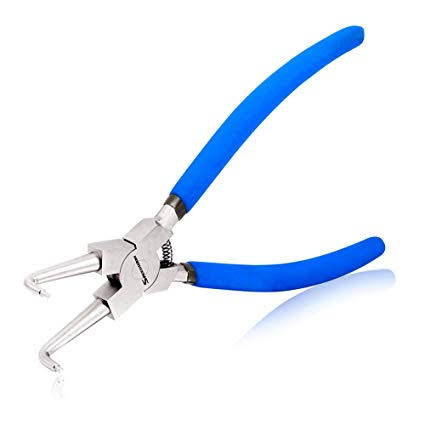 12. Snap Ring Pliers | Used for the insertion and removal of snap rings. |
 13. Bail Making Pliers | Used to make delicate objects like jewelry, clasps, and ear wires. |
 14. Battery Pliers | used in automotive industries for maintaining bolts on batteries. |
 15. Brake Spring Pliers | Used in automotive for removal and insertion of springs in the drum brakes of the vehicle |
16. Combination Pliers | Used for cutting, gripping, twisting, bending and removal of insulation of the wires. |
 17. Eyelet Pliers | Used in clothing industries for punching holes in clothes. |
 18. Grommet Pliers | used in making holes in heavy materials like tents, etc. |
 19. Hose Grip Pliers | used to grip hoses (pipes) in plumbing, in automotive it is used to grip hose of spark plugs, etc. |
 20. Oil Filter Pliers | Used in Automotive industries for the removal of oil filter casing. |
 21. Nail Puller Pliers | It is used in woodworking industries to pull nails out of wood. |
 22. Push Pin Pliers | Used in automotive industries to remove the plastic push pins on the vehicle. |
 23. Wire Twisting Pliers | Used by electrician for the twisting of wires. |
 24. Piston Ring Pliers | It is used to remove the piston rings of the engine. |
Conclusion
In this way, we have discussed almost all the common types of pliers that are currently used in the industrial world. All these pliers are very important and we have also learned how to identify them. Let us know in the comments if you have any questions.























